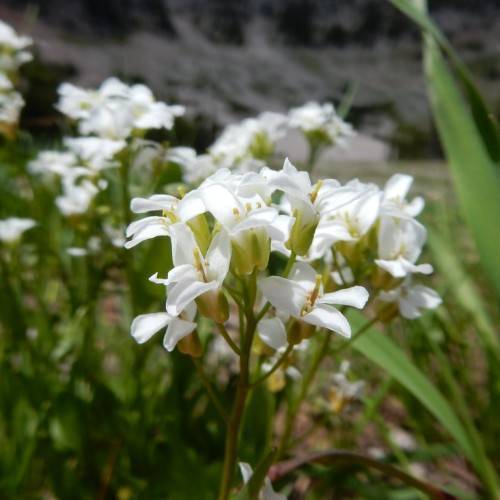
Nuttall's Rockcress
Arabis nuttallii
Watering:
Frequent
Hardiness Zone:
Sun:
full sun,part shade
Leaf:
Yes
Growth Rate:
Low
Drought Tolerant:
Yes
Salt Tolerant:
Yes
Care Level:
Medium
watering
Nuttall's Rockcress (Arabis nuttallii) should be watered regularly throughout its growing season. When watering, it’s important to not overwater and provide just the right amount. Depending on the soil and temperature, the plant should be watered about once a week or more often if the soil is dry to the touch. You should water until the soil is saturated and allow time for the excess moisture to drain. During periods of hotter temperatures and drier soil, water more often to keep the soil from becoming dry and cracked. Nuttall's Rockcress should be watered less in the winter months due to the wet season.
sunlight
Nuttall's Rockcress, also known as Arabis nuttallii, grows best in dry, sunny climates with well-drained soil. It requires full sun for optimum growth and blooms; however, some partial sun is acceptable. The ideal temperature range for maximum growth is between 60-70°F (15-21°C). Nuttall's Rockcress is a relatively short-lived perennial, blooming from spring to summer or autumn, depending on the climate and geographic location. It is tolerant of extreme cold temperatures and short periods of frost. To ensure the best bloom and foliage performance, provide the plant with at least 6 hours of direct sunlight each day.
pruning
Nuttall's Rockcress should be pruned lightly throughout its growing season. Pruning should take place in late-March and early April when the plant is actively growing. Early spring pruning helps promote new growth and keeps the plant looking neat and tidy. To prune, use clean, sharp pruning shears to trim back any long or overgrown stems. Aim to remove about 1-third of the overall height of the plant. After pruning, mulch with a light layer of compost or aged manure to help protect and revitalize the soil. Prune as needed throughout the growing season to keep the plant neat and compact.
